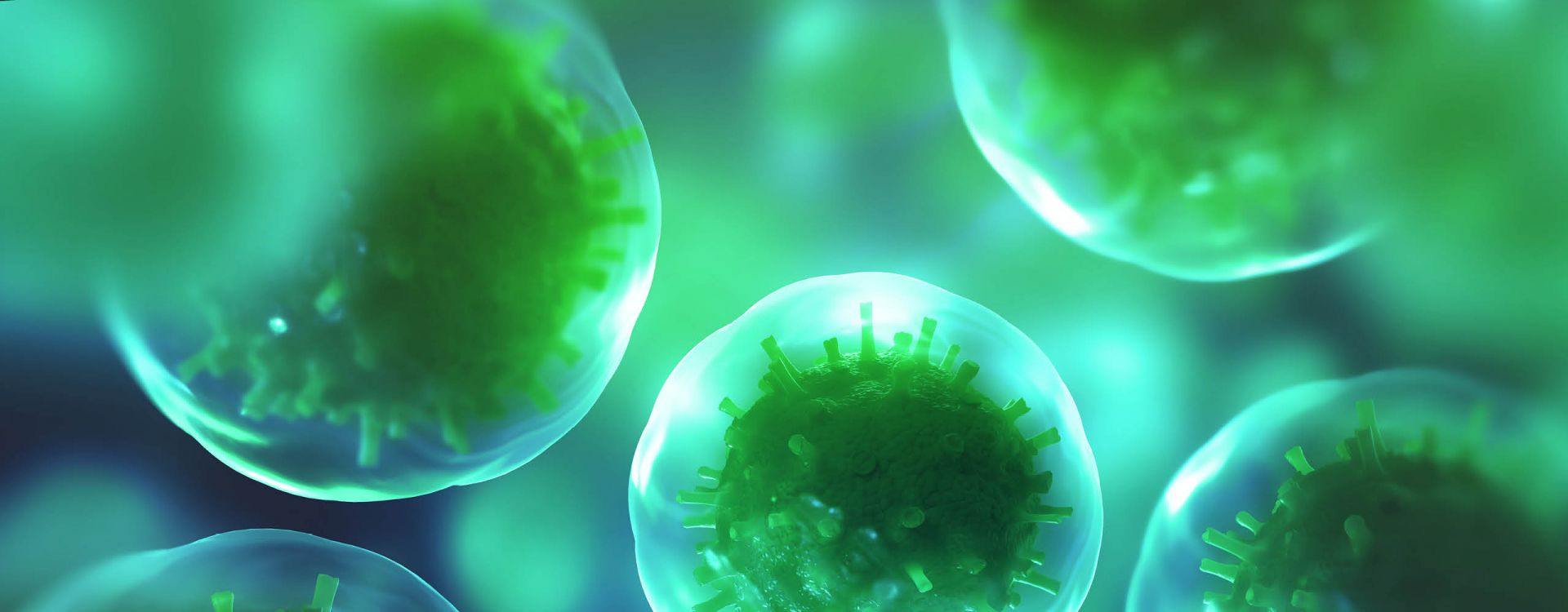While getting pregnant for any cisgender woman still originates with an embryo implanted into a uterus, there are quite a few ways to go about getting pregnant outside of the traditional route of male-female intercourse.
Here are some of the options lesbians have to get pregnant, along with the financial, medical, legal, and social obstacles they may face along the way.
Can Two Women Have a Baby?
Two cisgender women cannot have a baby without the help of a donor’s sperm and at least one of the women having a viable uterus to carry the fetus. Although some species (birds, reptiles, and other animals) reproduce asexually via parthenogenesis even when males are available for mating, we mammals are not among them [*].
How Can Lesbian Couples Get Pregnant?
Lesbian couples have several options to get pregnant, based on their age, health, donor preferences, how they want to experience the pregnancy, which partner will carry the child, and what they can afford.
The medical options for conception are known as Assisted Reproductive Technologies (ART), and they include artificial insemination and in vitro fertilization. Both require donor sperm.
Artificial Insemination (IUI or ICI)
Both IUI (intrauterine insemination) and ICI (intracervical insemination) work with closely timed ovulation cycles.
In IUI, a doctor will use a fine catheter to insert the donor sperm directly into the uterus of the partner designated to host the baby. The sperm is screened and cleaned to remove proteins that might reduce the chance to conceive and made more concentrated in the process.
In ICI, the sperm is inserted with a syringe near the cervix, akin to intercourse, or placed in a cervical cap inserted into the cervix that stays for a certain amount of time.
In either procedure, the inseminated partner is instructed to lie down for 15-30 minutes to give the sperm time to travel.
To increase the odds of conception, the gestational host may be primed with medication such as Clomid to increase her production of eggs.
Two weeks after either treatment, the host partner should take an at-home pregnancy test to see if it was successful.
What’s the Difference Between IUI and ICI?
- IUI may be preferable for couples with a known fertility issue regarding the cervix or sperm motility because of the direct delivery to the uterus.
- The success rate for ICI is 37.9% after 6 treatment cycles. The success rate for IUI is only slightly higher, 40.5% after 6 treatment cycles [*].
- One study indicated a greater incidence of live birth after IUI, but another study analyzing many other studies concluded there was insufficient evidence to indicate whether ICI or IUI offers higher birth rates [*][*].
- IUI carries a small risk (1 in 10,000 IUI cycles) of infection from bacteria or a virus introduced into the uterus, either from the catheter or the semen itself [*].
In Vitro Fertilization (IVF) and Reciprocal IVF
In vitro fertilization involves inducing a woman to ovulate with medication, harvesting her eggs in a medical procedure, fertilizing the eggs with donor sperm in a lab, and then transferring the fertilized egg (embryo) into the womb to implant and gestate.
When the egg comes from one partner but is implanted into the other partner to carry the baby, it’s called reciprocal IVF.
Some lesbians opt for reciprocal IVF because it gives both partners a way to be a physical part of the pregnancy, but state laws may vary as to who is considered the biological mother in this scenario. Check with an attorney in your area who specializes in family law to ensure both partners have equal rights to care for the child in the event of death or divorce.
Other reasons for reciprocal IVF may be medical, based on the age or health of the partners and their ability to carry a child. In some cases, both partners may carry the other’s child at the same time, or reverse roles for a second child.
The retrieved eggs may be frozen for subsequent fertilization or implanted in the same cycle. In reciprocal IVF, the partner’s cycles can be synced with medication ahead of the process when implanting in the same cycle. If the embryos are frozen, they can be implanted when the partner is ready or across multiple cycles. A full IVF cycle takes 2-3 weeks.
IVF may be offered as a first-line treatment for couples in which the designated carrier has issues with ovulation, uterine fibroids, fallopian tube damage or endometriosis, or a known genetic disorder [*].
What’s the Difference Between Artificial Insemination and IVF?
- In IVF, the egg is fertilized externally, in a lab. In artificial insemination, fertilization occurs in the gestational carrier’s body.
- When you take fertility medications and have artificial insemination, the risk of having multiples is markedly increased. For instance, a woman under 38 having IUI with Gonadotropin has a multiples risk of 32%. This is something that can be more successfully controlled with IVF [*]. A woman under 38 having a single embryo transfer via IVF carries a 1% risk of multiples, while a double embryo transfer carries a 30% risk [*]. The number of embryos placed in the uterus may be based on the age of the eggs and the number of eggs collected but it’s best to discuss this with your fertility specialist.
- With IVF, the embryo can be tested before implantation with preimplantation genetic testing to determine chromosomal abnormalities and screen for certain heritable disorders, reducing the risk of miscarriage and birth defects from aneuploidies [*].
- IVF is more successful than IUI, with shorter times to pregnancy and a higher live birth rate [*].
- IVF is much more expensive (about 5x more expensive per cycle) than artificial insemination. (More on the costs follows).
Embryo Adoption
Embryo adoption is another route to pregnancy if you and your partner are comfortable with having no biological connection to the baby outside of carrying it to term. It may be less expensive to adopt an embryo than to buy eggs or even adopt a child [*].
That said, the recent decision from the Alabama Supreme Court ruling that frozen embryos are children may complicate the ability to procure embryos in the future and have a profound effect on IVF, in general, should other states move in this direction.
The case was brought by several couples whose frozen embryos were destroyed when a hospital patient wandered into an unsecured cryogenic nursery, removed several embryos, and, burned by the sub-freezing temperatures, dropped them on the floor. The decision of the trial court stating the embryos were not children under the law was overturned by the Alabama Supreme Court, whose decision was based on an 1872 statute that allows parents to sue over the wrongful death of a minor child [*][*].
As of this writing, the health system at the University of Alabama at Birmingham is the first fertility clinic in the state to cease IVF fertility treatments in the wake of this decision, fearing repercussions. Some view the ruling as a veiled attempt by conservatives to prevent LGBTQIA+ people from starting families, but it’s going to affect all families struggling with fertility [*].
Things to Consider With Lesbian Pregnancy Options
Like any parents who need assisted reproduction technology to conceive, lesbian couples will want to consider the potential cost, whether insurance will cover any of it, who to get the sperm from, and what they will do if they find themselves pregnant with multiple children.
Lesbian parents also need to contend with the laws regarding parenthood in their state, which partner will carry the child and/or provide the egg, and the potential for discrimination they may face during pregnancy and after. Here’s what we know:
Where Can Lesbians Get Sperm From?
For any assisted reproduction technique, the sperm may be from a known donor (friend, former male partner, brother, etc.) or a sperm bank donor. Even if you choose the latter, there’s no guarantee of anonymity.
In the early days of sperm banking, donor anonymity was closely guarded. Advances in DNA testing and facial recognition software in subsequent years, and a demand from the children of sperm bank donors to know and be known, have made anonymity among sperm donors largely impossible.
In 2000, a 10-year-old boy and his mother created what ultimately became the Donor Sibling Registry — a site where donor-conceived people could enter their donor numbers, and find their donor fathers and perhaps their half-siblings. The Donor Sibling Registry today matches about 1,000 people each year, primarily half-siblings [*]. Some children may find they have more than 50 half-siblings [*].
Back in the 1980s, few doctors were willing to help lesbian couples and single mothers conceive via donor insemination. Around 2000, sperm banks saw a drop in their business as reproductive technology like IVF helped more opposite-sex couples conceive using their own sperm. Today, sperm banks market heavily to same-sex couples, most of whom are women. Most offer a catalog of donors detailing their ethnicity, height, physical characteristics, and for an additional fee, a more extensive profile.
A Nationwide Shortage of Sperm from Black Donors
While sperm banks market heavily to same-sex couples, black lesbian couples are going to have a hard time finding sperm from black men because only 4% of sperm donors are black.
The reasons for a nationwide shortage of black donors are not well researched, but some surmise it may be the result of an industry that has typically targeted affluent white families, lack of effective recruitment of black men, invasive or complicated sperm donor applications, and systemic racism [*].
To fill the gap, at least one sperm bank specializes in helping black parents expand their families with sperm from black donors [*]. But some families may find they have to compromise on the ethnicity of their sperm donor.
IVF and Pregnancy Complications
IVF is linked with an increase in certain complications of pregnancy, including pregnancy-related high blood pressure, diabetes, preeclampsia, and placenta disorders [*].
There is also the problem of multiples. The ACOG recommends that when triplets or more are conceived as a result of IVF, a multifetal reduction should be discussed to mitigate the health risks for the carrier and the fetuses. Even IVF twins are at increased risk of preterm birth and low birth weight. Monozygotic twin pregnancies also occur at a higher rate with ART, as well as a slightly increased risk of birth defects [*].
On the positive side, studies have found no difference among school-age children conceived via IVF or naturally in regard to intellectual development or educational outcomes [*].
Insurance Coverage for Same-Sex Fertility Treatment
Insurance is less likely to cover infertility treatments for lesbian couples because many insurers who provide fertility treatment coverage define infertility as an inability to conceive after a year of unprotected sex [*]. The CDC and WHO also define infertility in these terms [*].
An Illinois resident named Kelsey Murphy filed a class action suit against Blue Cross Blue Shield of Illinois claiming this language is discriminatory and violates Section 1557 of the Affordable Care Act, which prohibits discrimination in health-care programs based on characteristics such as sex.
Murphy’s BCBSIL policy required her to prove her infertility by paying out of pocket for a year of medically based conception (artificial insemination) before her policy would cover IVF. She argued this was discriminatory because, as a lesbian, she would have to bear out-of-pocket costs to prove she couldn’t conceive while a heterosexual woman would not [*].
In fact, she and her partner incurred $19,000 out-of-pocket for one successful pregnancy. The U.S. District Court for the Northern District of Illinois has allowed the case to proceed. The outcome could have profound ramifications for the LGBTQ+ community [*].
The Costs of Fertility Treatment
IUI costs between $500-$4,000 per cycle. The biggest cost factor is the medication to encourage the woman to ovulate. Clomid costs about $100 while gonadotropins — most often used in older patients or those with fertility issues — can run around $2,000. A trigger shot of gonadotropins self-injected runs $50 - $250. These medications are not required to conceive but do increase the chances [*]. At the same time, the risk of multiple births increases dramatically with drugs like clomid, letrozole, and especially gonadotropins.
Insurers vary greatly in their approach to IUI fertility treatment. Some are reluctant to cover the drugs because they think the cost doesn't justify the risk of multiple births when the birth rate is only slightly higher using gonadotropins. And twin and triplet births can be extremely expensive, from $100,000 for twins to $400,000 for triplets. [*] Multiple births also increase the risk of pregnancy-related high blood pressure and diabetes, preterm delivery, low birth weight and birth defects [*].
Some insurers may require all patients to go through IUI several times before advancing to IVF [*].
A single IVF cycle at a U.S. fertility clinic can run $15,000-$25,000, depending on your location. Fees can mount if you opt for injectable hormones, ICSI (intracytoplasmic sperm injection, where a single sperm is injected into each egg), preimplantation genetic testing, a trial transfer, and storage or cryopreservation fees for embryos you may want to save [*] [*].
Most IVF patients fail to conceive on their first cycle and will undergo, on average, 2.3 - 2.7 cycles before conceiving or giving up [*].
The Social Acceptability of Same-Sex Parenting
The American family is diverse today. According to the 2020 U.S. Census, about 15% of the 1.1 million same-sex couples in the U.S. had at least one child under 18 in their household, compared to 37.8% of opposite-sex couples. Half of the same-sex couples in the U.S. are married couples and married same-sex couples are more likely to bear or raise children [*].
Among married same-sex couples, female couples are three times more likely to raise children. Same-sex couples are also seven times more likely to raise an adopted or foster child than their opposite-sex counterparts [*].
It may surprise you to learn that the highest proportion of same-sex couples raising children live in Mississippi, Wyoming, Alaska, Idaho, and Montana [*].
All of which makes you wonder how fewer than half of Americans say a married (47%) or unmarried (41%) gay or lesbian couple raising children is completely acceptable, with another 12% each saying these types of families are somewhat acceptable, according to Pew Research published last year. Taken together, more find same-sex parenting acceptable than unacceptable, but those figures are still disappointing [*].
Medical Bias
According to a 2022 poll conducted by the AAMC Center for Health Justice, when asked to describe the overall childbirth experience, more LGBTQ+ individuals (31%) reported having a less than “good” experience (fair, poor, or very poor) than their cisgender, heterosexual counterparts (18%) [*].
More than half (51%) of LGBTQ+ people giving birth reported that the quality of their experience with pregnancy, birth, and postpartum care was impacted by bias or discrimination, compared to 35% of cisgender heterosexuals [*].
Can Lesbian Couples Bank Cord Blood?
Yes, lesbian couples can bank their child’s cord blood. There are more than 80 FDA-approved cord blood stem cell treatments for cancers, blood diseases, immune system disorders, and metabolic disorders.
MiracleCord offers the industry’s most advanced technology coupled with great service and affordable pricing. Download our Free Info Kit to learn more, or call us at 888.743.2673.
The Bottom Line
Since the first successful IVF birth in 1978, more than 8 million babies have been born worldwide thanks to assisted reproduction technology.
Lesbian pregnancy options are available, and while there may be hurdles to overcome, there are reproductive clinics that can support lesbian couples on their journey to expand their family.
DISCLAIMER: THE INFORMATION ON THIS WEBSITE IS NOT INTENDED TO BE USED AS MEDICAL ADVICE.The materials and information contained on the MiracleCord website is provided for educational and informational purposes only, and is not intended to, and does not constitute, medical or other health advice or diagnosis, and should not be used as such. You should not use this information to diagnose or treat a health problem or disease. If you are seeking personal medical advice, you should consult with a licensed physician. Always consult with a qualified health care provider regarding a medical condition.




